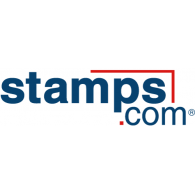How I Started A $5K/Month Side Hustle Selling Mechanical Keyboard Accessories
Hello! Who are you and what business did you start?
My name is Brad Agdern, and I am the founder of TechKeys, an online retail store dedicated to mechanical keyboard parts and accessories. What is a mechanical keyboard you might ask? If you are old enough to have experienced computer keyboards from the late ’80s and ’90s, you undoubtedly can recall the satisfying “snick” or “thunk” that each keypress made, giving you a tactile feedback that the key was pressed. Most modern keyboards leverage a technology known as “rubber dome” which is cheaper to manufacture as well as allow for lower-profile keyboards.
As a result of this shift to cheaper “mushier” feeling keyboards, a growing community of enthusiasts has popularized the mechanical keyboard as a high-end option for gamers, programmers, PC builders, and office professionals. This Google trends chart shows how it has taken off since 2008:


Download the report and join our email newsletter packed with business ideas and money-making opportunities, backed by real-life case studies.

Download the report and join our email newsletter packed with business ideas and money-making opportunities, backed by real-life case studies.

Download the report and join our email newsletter packed with business ideas and money-making opportunities, backed by real-life case studies.

Download the report and join our email newsletter packed with business ideas and money-making opportunities, backed by real-life case studies.

Download the report and join our email newsletter packed with business ideas and money-making opportunities, backed by real-life case studies.

Download the report and join our email newsletter packed with business ideas and money-making opportunities, backed by real-life case studies.

Download the report and join our email newsletter packed with business ideas and money-making opportunities, backed by real-life case studies.

Download the report and join our email newsletter packed with business ideas and money-making opportunities, backed by real-life case studies.





















